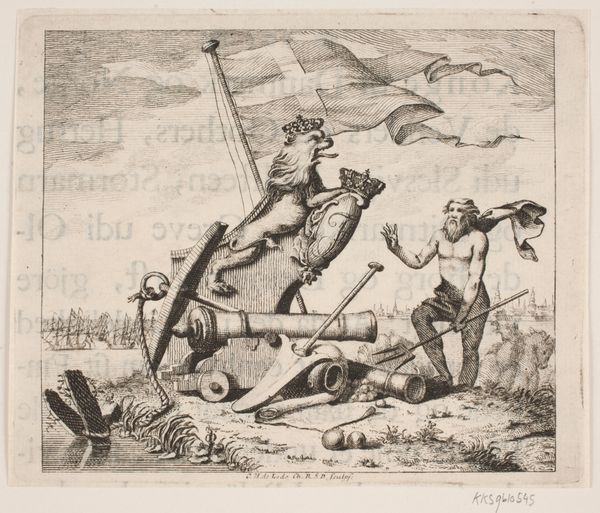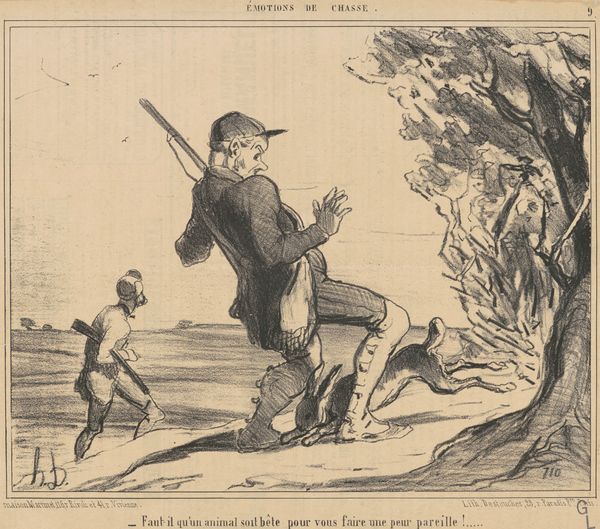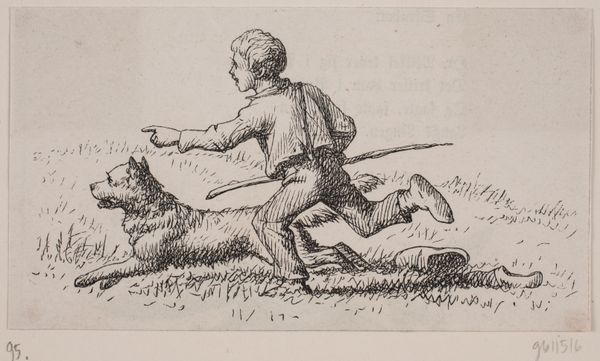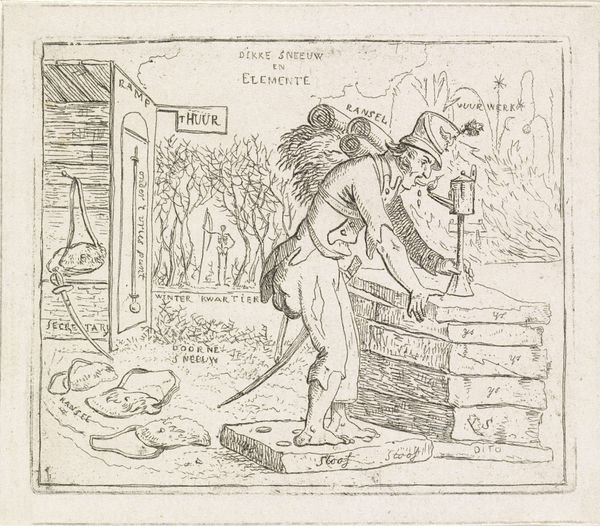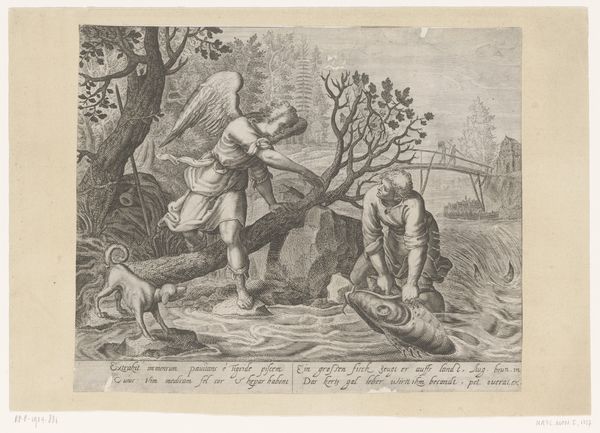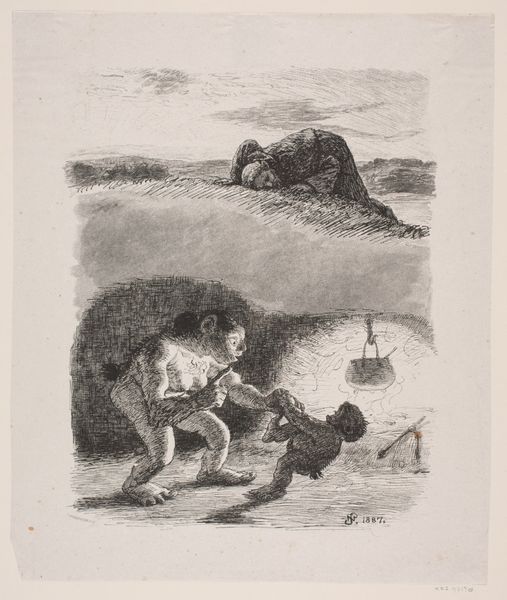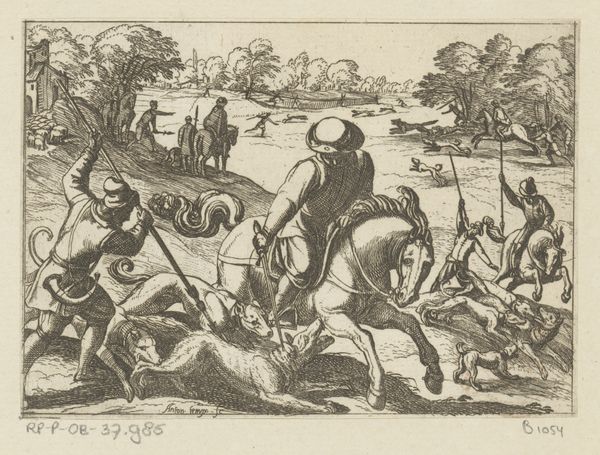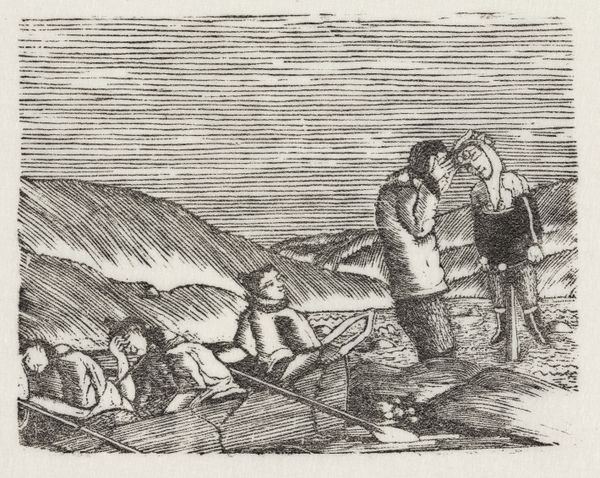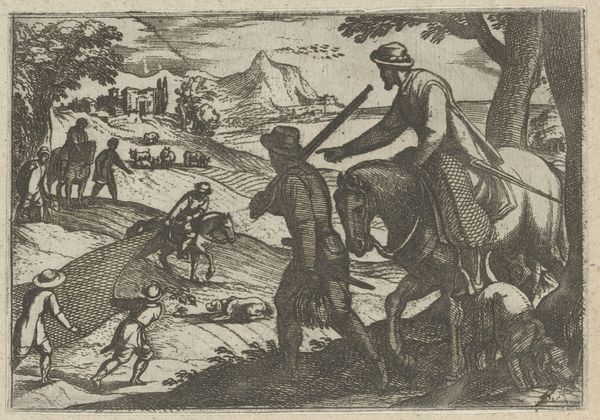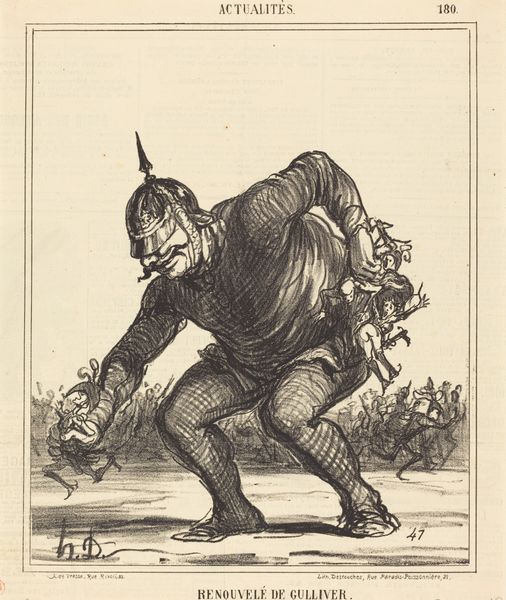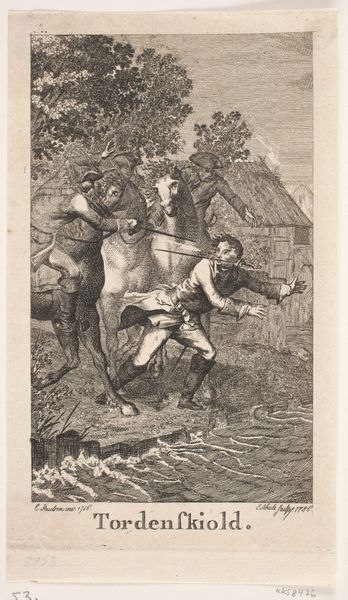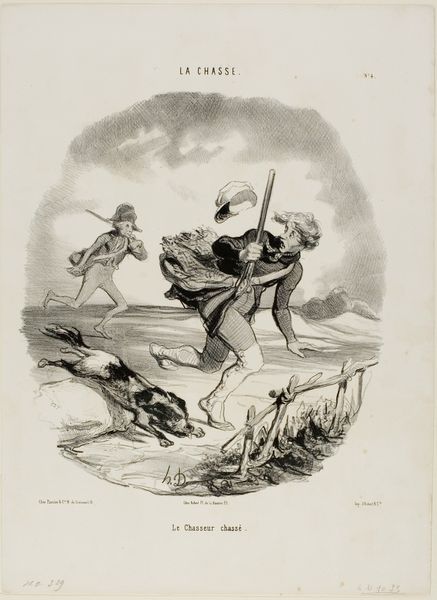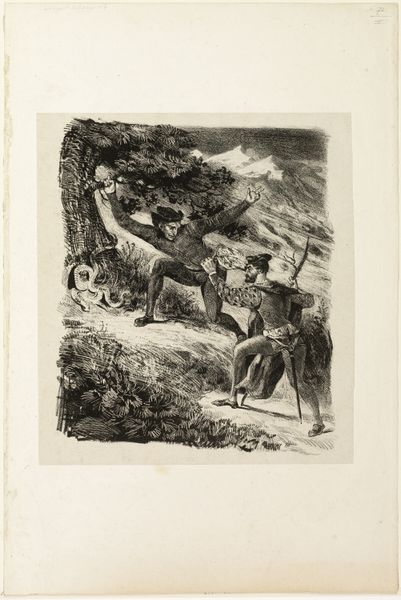
drawing, print, ink, woodcut, engraving
#
drawing
#
narrative-art
# print
#
figuration
#
ink
#
woodcut
#
pen work
#
engraving
Dimensions: 57 mm (height) x 69 mm (width) (bladmaal)
Curator: Let’s take a look at “Vignet,” an engraving and woodcut print created between 1820 and 1908 by Lorenz Frølich, which the Statens Museum for Kunst holds in its collection. Editor: My initial impression is of a somewhat tense tableau, despite the rather straightforward composition. The stark lines create a dramatic effect. Curator: I find it fascinating how Frølich combines the figure of a hunter or perhaps a fisherman with a rather majestic eagle. One has to wonder about the artist’s own views on authority. Notice how the human figure dominates, yet he is also connected to nature through the eagle. Perhaps it critiques the period's gender roles with the masculine fisherman figure being stripped of agency by nature. Editor: That's interesting. From a purely formal standpoint, the strong diagonal lines formed by the man's spear and the eagle's outstretched wing create a dynamic contrast against the more static horizontal lines of the water and land. The texture, too—the rough hewn lines in the background versus the relative smoothness of the figures themselves—it all draws the eye in. Curator: I wonder about the artist’s narrative intent, as well, especially since this image comes from an era marked by immense social and political shifts. The act of hunting and capture also could be interpreted as symbolizing the oppressive structures that constrained individual freedom during the time. Editor: Indeed, and speaking of the “Vignet” initial D: Is it purely decorative? Semiotic and structuralist theory teaches us to challenge what appear to be incidental aesthetic decisions. The D looms behind, a subtle inclusion that draws the viewer in to decoding other subtle elements within this illustration. Curator: A lot can be read through historical lens if one stops to consider art’s response to oppressive regimes and unjust societal norms. Editor: Indeed. It is equally vital that we unpack the formalist elements within to build broader narrative constructs and context, giving way to various perspectives and dialogues surrounding gender, identity, and justice in these formative eras of societal norms and structures.
Comments
No comments
Be the first to comment and join the conversation on the ultimate creative platform.
